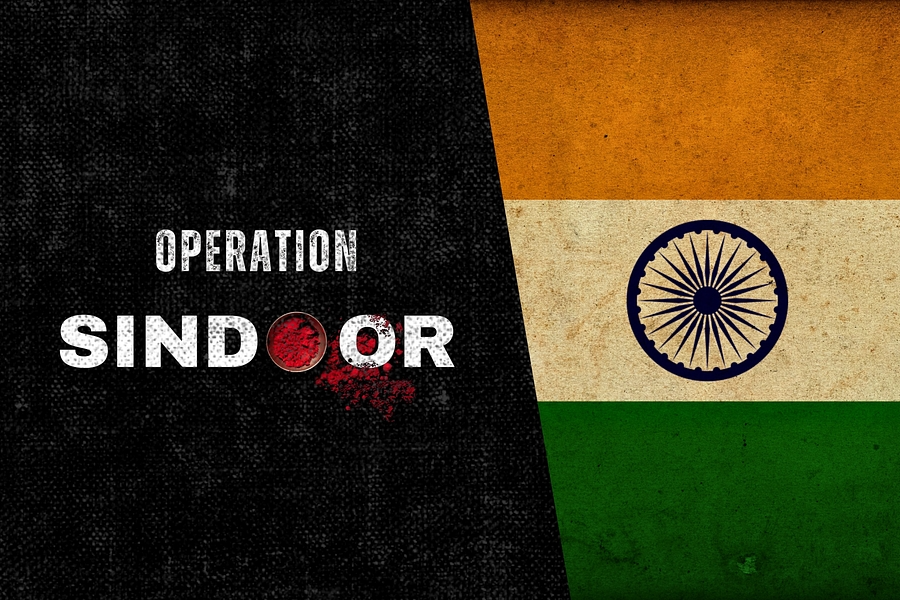October 18th Current Affairs
Table of Contents
Sociology and History
Home / Sociology and History Sociology Sociology is the scientific study of human societies, their interactions, and the processes that
Roadmap To Excel Anthropology In UPSC CSE
Home / Roadmap To Excel Anthropology In UPSC CSE A good score in optional is sine qua non for success
Sociology and Psychology
Home / Sociology and Psychology Sociology The term Sociology was coined by Auguste Comte, regarded as the Father of Sociology.
Sociology and Anthropology
Home / Sociology and Anthropology Sociology Sociology is the study of social life, exploring the social causes and effects of
UPSC Current Affairs – October 18th
October 18th Current Affairs Home / Table of Contents 3 Afghan cricketers killed in Pak air strike, cricket board withdraws
Scope of Sociology
Home / Scope of Sociology The term Sociology was coined by Auguste Comte, a French philosopher, in 1839. The teaching
Modernity and Social Change in Europe and the Emergence of Sociology
Home / Modernity and Social Change in Europe and the Emergence of Sociology Modernity Modernity refers to a distinct phase
UPSC Current Affairs – October 7th
October 07th Current Affairs Home / Table of Contents Citing ‘sanatan dharma’, lawyer hurls shoe at CJI Gavai; angered every
Digital Alienation in the IT Sector: A Marxist Perspective
Home / Digital Alienation in the IT Sector: A Marxist Perspective Sociology Paper 1: Sociological Thinkers – Karl Marx –
NIOS Political Science Textbook
NIOS Political Science Textbook NIOS Political Science Secondary NIOS Political Science Senior Secondary
3 Afghan cricketers killed in Pak air strike, cricket board withdraws from tri-series

Relevance to UPSC
GS Paper II: International Relations
- Reflects the fragile geopolitical balance in South Asia, where bilateral tensions between Afghanistan and Pakistan directly affect diplomatic and cultural engagements. Also it creates an impact on India as they are India’s crucial neighbours.
- Highlights how regional instability and border conflicts can undermine efforts at people-to-people and sports diplomacy.
- Reinforces the importance of diplomacy, conflict resolution, and regional cooperation mechanisms like SAARC for peace and mutual trust.
GS Paper III: Internal Security and External Threats
- Demonstrates how cross-border terrorism and military actions influence regional security and interstate relations.
- Highlights the security implications of civilian casualties, air strikes, and the role of non-state actors in escalating conflicts.
- Underscores the need for effective border management, intelligence cooperation, and confidence-building measures in South Asia.
More About the News
- The Afghanistan Cricket Board (ACB) announced withdrawal from a forthcoming tri-nation T20 series in Pakistan (with Pakistan and Sri Lanka) after an alleged Pakistani air-strike in Paktika province killed three Afghan domestic cricketers and injured others.
- The ACB condemned the strikes as “a cowardly attack by the Pakistani regime”, stating that victim-cricketers were targeted returning from a friendly match,the incident heightened existing border tensions between Afghanistan and Pakistan.
- The withdrawal marks a setback for Pakistan’s efforts to revive international cricket at home and reflects how sports engagements are directly affected by geopolitical and security dynamics in South Asia.
Terrorism
Terrorism poses a grave threat to India’s national security, destabilizes society, and hampers economic growth. Rising radicalization and cross-border support exacerbate the challenge.
Major Terror Attacks in India
- 26/11 Mumbai Attacks (2008): Coordinated attack by Lashkar-e-Taiba across multiple locations.
- Parliament Attack (2001): Pakistan-backed Jaish-e-Mohammed assault on Indian Parliament.
- Samjhauta Express Bombing (2007): Bomb attack on train connecting India and Pakistan, targeting civilians.
- Pulwama Attack (2019): Suicide bombing by Jaish-e-Mohammed on CRPF convoy.
- Hyderabad Blast (2007): Twin bombings by Students Islamic Movement of India (SIMI).
Causes of Terrorism
- Cross-Border Support & Proxy Warfare: Pakistan-based groups supporting insurgency in Kashmir (e.g., 26/11 Mumbai attacks).
- Religious & Communal Extremism: Radicalization in certain communities leading to violent ideologies (e.g., Malegaon blasts 2006).
- Political Grievances & Separatist Movements: Insurgency in Northeast India due to autonomy demands (e.g., ULFA attacks in Assam).
- Socio-Economic Inequalities: Poverty and unemployment driving youth towards militancy (e.g., Naxal/Maoist recruitment in Chhattisgarh).
- Global Terror Networks & Ideologies: Influence of ISIS and Al-Qaeda inspiring lone-wolf attacks (e.g., 2016 Dhaka attack in India-inspired radical planning).
Challenges in Curbing Terrorism
- Porous Borders & Infiltration: Difficult terrain in J&K enables militants to cross undetected (e.g., 2016 Uri attack).
- Funding & Logistics: Terror groups receive funds via hawala or charities (e.g., 26/11 funding traced to Pakistan).
- Cyber-Radicalization: Online recruitment and propaganda spreading extremism (e.g., ISIS recruitment online).
- Insufficient Intelligence Coordination: Lack of real-time intelligence sharing between agencies (e.g., Mumbai 2008 lapses).
- Political & Community Sensitivities: Fear of communal backlash hampers proactive action (e.g., handling SIMI-related terror cases).
Government Initiatives Taken
- Legislation: Unlawful Activities (Prevention) Act (UAPA), National Investigation Agency Act.
- Counter-Terrorism Agencies: NIA, National Technical Research Organisation (NTRO), Research & Analysis Wing (RAW).
- Border Security: BSF & ITBP modernization, fencing, surveillance drones.
- Community Policing & De-radicalization: PRAGATI initiative in Northeast, counseling & awareness programs.
- Technology & Intelligence: NATGRID, CCTNS, AI-assisted threat analysis for proactive response.
Way Forward
- Strengthen cross-border intelligence sharing with friendly nations.
- Enhance cyber-surveillance and counter-propaganda mechanisms.
- Promote socio-economic development in vulnerable regions to reduce recruitment.
- Improve coordination between state and central agencies.
- Institutionalize community engagement and deradicalization programs nationwide.
Terrorism will persist without integrated strategies combining intelligence, community engagement, and socio-economic reforms; India must innovate policies for resilient, proactive, and technology-driven counterterrorism.
Prelims MCQ
Which of the following measures directly help in countering terrorism in India? 1. Strengthening NATGRID and intelligence sharing. 2. Promoting socio-economic development in insurgency-prone areas. 3. International collaboration with friendly nations for security intelligence. 4. Only increasing police numbers without technology integration.
A. 1, 2 and 3 only
B. 2 and 4 only
C. 1, 3 and 4 only
D. All of the above
Mains Question
Q. The scourge of terrorism is a grave challenge to national security. What solutions do you suggest to curb this growing menace? What are the major sources of terrorist funding? (PYQ 2017)
3 Bangladeshis killed in Tripura after attacking locals, Delhi-Dhaka row erupts

Relevance to UPSC
GS Paper II: International Relations
- Reflects the sensitivity of India–Bangladesh relations, where even localised border incidents can escalate into diplomatic disputes.
- Highlights the challenges of managing extensive international borders marked by historical, cultural and economic interlinkages.
- Reinforces the importance of bilateral mechanisms such as Border Coordination Conferences and Joint Working Groups to address recurring border tensions and promote mutual trust.
GS Paper III: Internal Security and Border Management
- Demonstrates the persistent issue of cross-border smuggling and illegal infiltration, posing threats to India’s internal security and social stability in frontier regions.
- Highlights the need for improved border surveillance, fencing, and cooperation between BSF and BGB (Border Guard Bangladesh).
- Emphasizes how local-level conflicts at the border can have broader implications for national security and international diplomacy.
More About the News
- Three Bangladeshi nationals allegedly crossed into Indian territory in Tripura and attempted cattle theft and in the ensuing confrontation a local Indian villager was killed and the trespassers died.
- The Bangladeshi government has protested, calling the incident a “heinous act” and a “grave violation of human rights”, demanding India carry out an “immediate, impartial and transparent investigation”.
- The Indian Ministry of External Affairs says the incident occurred about 3 km inside Indian territory, characterized the deceased as “miscreants” and urged Bangladesh to support fencing and anti-smuggling efforts along the border.
Illegal Immigrants
Illegal immigration poses security, economic, and social challenges for India, especially along porous borders. It affects governance, resource allocation, demographic balance, and can exacerbate communal tensions.
Causes of Illegal Immigration in India
- Economic Opportunities: Migrants seek jobs and better livelihoods, e.g., Bangladeshis moving to West Bengal.
- Political Instability & Persecution: Refugees escaping conflicts or communal violence, e.g., Rohingyas from Myanmar in Jammu & Kashmir.
- Porous Borders & Weak Monitoring: Difficulty in surveillance along India-Bangladesh, India-Myanmar, India-Pakistan borders.
- Natural Disasters & Climate Change: Floods, cyclones, and erosion drive cross-border movement, e.g., Bangladesh flood migrants in Assam.
- Social Networks & Community Links: Presence of kin or cultural ties encourages migration, e.g., Bengali-speaking migrants in Tripura and Assam.
Impacts of Illegal Immigration in India
- Economic Strain: Pressure on jobs, housing, and public services in border states.
- Security Threats: Potential infiltration by terror or criminal elements.
- Demographic Change: Alters population composition, affecting politics and resource distribution.
- Social Tensions: Can lead to communal or ethnic conflicts, e.g., Assam protests against illegal migrants.
- Strain on Governance: Challenges identification, documentation, and policy implementation, e.g., NRC implementation issues.
Challenges in Curbing Illegal Immigration
- Porous Borders: Difficult terrain makes surveillance challenging, e.g., Bangladesh-Assam border.
- Political Sensitivities: Deportation may cause local or international criticism, e.g., Rohingya issue.
- Lack of Accurate Data: Many undocumented migrants remain untracked.
- Legal Complexities: Human rights, refugee laws, and citizenship rules complicate enforcement.
- Resource Constraints: Limited personnel, technology, and infrastructure at borders.
Way Forward
- Strengthen border fencing, surveillance, and technology-driven monitoring.
- Implement robust identification systems (e.g., NRC, Aadhaar integration).
- Coordinate with neighboring countries for legal migration agreements.
- Promote socio-economic development in border areas to reduce inflow pressure.
- Sensitize local communities to manage social cohesion and integration.
Illegal immigration will remain a complex challenge; India must adopt technology, international cooperation, legal clarity, and socio-economic strategies to safeguard security, resources, and social harmony.
Prelims MCQ
Q. Which of the following measures can effectively address illegal immigration in India? 1. Strengthening border fencing and surveillance. 2. Implementing robust identification systems like NRC and Aadhaar. 3. Deporting all migrants without legal review. 4. Promoting socio-economic development in border districts.
A. 1, 2, 4
B. 2, 3
C. 1, 3, 4
D. All of the above
Mains Question
Q. Refugees should not be turned back to the country where they would face persecution or human right violation. Examine the statement with reference to the ethical dimension being violated by the nation claiming to be democratic with open society. (PYQ 2021)
Mental health film festival set to happen in Bengaluru

Relevance to UPSC
GS Paper I: Society and Social Issues
- Reflects the growing societal recognition of mental health as an essential aspect of well-being and human development.
- Highlights the role of art and cinema as mediums for social awareness, empathy building, and destigmatization of mental illness.
- Emphasizes the importance of community engagement and dialogue in addressing mental health challenges in India.
GS Paper II: Governance and Social Justice
- Demonstrates how public–private partnerships and civil society initiatives contribute to advancing mental health advocacy and policy awareness.
- Highlights the role of institutions like NIMHANS and philanthropic organizations in promoting inclusive health governance.
More About the News
- A film festival titled “Screening the Mind” will be held in Bengaluru, showcasing six films on mental health themes like Alzheimer’s, schizophrenia, and trauma.
- Organised by Rohini Nilekani Philanthropies, NCBS, and NIMHANS, it aims to highlight lived experiences of mental illness through storytelling and empathy.
- Part of the national mental health festival “Manotsava”, it seeks to destigmatize mental health and promote public dialogue on wellbeing.
Mental Health
Mental health refers to emotional, psychological, and social well-being, influencing thought, behavior, and interaction. Rising stress, lifestyle changes, and social pressures make mental health a critical public health concern.
What is Mental Health?
- A state of well-being in which an individual realizes their potential, copes with normal life stresses, works productively, and contributes to society (WHO definition).
- Encompasses emotional, psychological, and social aspects of human functioning.
- Integral to overall health and human development.
Current Status of Mental Health
- WHO estimates 1 in 7 Indians suffer from mental disorders.
- Rising prevalence of depression, anxiety, substance use, and stress-related disorders.
- Stigma and lack of awareness hinder early intervention and treatment.
- Limited mental health infrastructure: ~0.3 psychiatrists per 100,000 population in India.
Factors Rising Mental Health Concerns
- Urbanization & Lifestyle Changes – Stress, isolation, work pressure in urban centers.
- Social Media & Digital Addiction – Cyberbullying, comparison, and reduced real-life interaction.
- Economic Uncertainty & Unemployment – Financial stress leading to depression and anxiety.
- Pandemics & Disasters – COVID-19 increased prevalence of anxiety and PTSD.
- Stigma & Lack of Awareness – Prevents seeking timely help; mental health often neglected in policy and community.
Government Initiatives Taken
- National Mental Health Programme (NMHP, 1982) – Integration of mental health with primary healthcare.
- Mental Healthcare Act, 2017 – Guarantees right to mental health services; decriminalizes suicide.
- District Mental Health Programme (DMHP) – Provides mental health services at community level.
- KIRAN Helpline (1800-599-0019) – 24×7 national mental health helpline for counselling.
- School & Workplace Programs – Initiatives for early intervention, awareness, and stress management.
Best Practices
From India:
- Atmiyata Project (Maharashtra) – Community-based mental health support using trained volunteers.
Global:
- “Time to Change” (UK) – National anti-stigma campaign reducing discrimination and improving awareness.
- Mental Health First Aid (MHFA) Training (Australia) – Educates communities to provide initial support for mental health crises.
Way Forward
- Increase mental health workforce and infrastructure.
- Integrate mental health into primary healthcare at scale.
- Promote awareness campaigns to reduce stigma.
- Use technology (tele-counseling, AI-based screening) for wider reach.
- Encourage research and data collection to inform policy.
Mental health is central to national development; India must expand services, reduce stigma, leverage technology, and implement inclusive policies for early detection, treatment and community support nationwide.
Prelims MCQ
Q. Which of the following are initiatives taken by the Indian government to address mental health?
1. KIRAN Helpline
2. District Mental Health Programme (DMHP)
3. National Nutrition Mission (POSHAN Abhiyaan)
4. Mental Healthcare Act, 2017
1, 2 and 3 only
B. 1, 2 and 4 only
C. 2, 3 and 4 only
D. All of the above
KIRAN Helpline provides 24×7 counseling for mental health issues. DMHP ensures community-level mental healthcare. Mental Healthcare Act, 2017 legally guarantees mental health rights. POSHAN Abhiyaan is unrelated to mental health; it focuses on nutrition.
Mains Question
Q. In order to enhance the prospects of social development, sound and adequate health care policies are needed particularly in the fields of geriatric and maternal health care. Discuss. (PYQ 2020)
Karnataka High court tells jail authorities to inform convicts about parole conditions

Relevance to UPSC
GS Paper II: Governance and Social Justice
- Reflects the judiciary’s proactive role in ensuring transparency and procedural fairness within the prison and parole system.
- Highlights the need for better coordination between prison authorities and legal aid institutions like KSLSA to uphold convict rights.
- Reinforces the principle of accountability and humane governance within correctional administration as part of good governance practices.
GS Paper III: Internal Security and Corrections Management
- Demonstrates the significance of effective prison reforms in maintaining discipline, rehabilitation, and reducing recidivism.
- Highlights how proper communication of parole conditions can prevent misuse, absconding, and security lapses in the penal system.
- Emphasizes the importance of systematic reforms for a transparent and rehabilitative correctional framework.
More about the News
- The Karnataka High Court directed jail authorities to clearly inform convicts about parole conditions and consequences of violations.
- It asked the prison department and KSLSA to distribute pamphlets in Kannada and English detailing parole rights and duties.
- The Court stressed that officers must verbally brief convicts in an understood language and obtain written acknowledgement to ensure awareness.
Parole and Furlough
Parole and furlough are temporary releases granted to convicts under legal provisions, aimed at rehabilitation, social reintegration, and maintaining family and community ties while ensuring public safety.
Parole
- Definition: Temporary, time-bound release of a prisoner before sentence completion for short-term situations like illness or family emergencies, granted for good behavior.
- Purpose: Allows convicts to return to society temporarily, maintain family ties, and socialize.
- Duration: Typically up to one month; can be extended under special circumstances.
- Exemptions:
- Convicts of crimes against the state or threats to national security.
- Convicts of murder, child rape, or similar serious offenses, unless specially authorized.
Furlough
- Definition: Conditional temporary release for long-term prisoners to break monotony and maintain contact with society, while the sentence continues; no uniform legislation exists.
- Objective: Prevents mental stagnation in prison and aids social reintegration, granted based on good conduct.
- State Practices:
- Some states deny furlough during appeal periods, suggesting convicts seek relief from the court.
- National Legal Services Authority (NALSA) highlighted inconsistency in state furlough policies during appeals.
Constitutional and Legal Insights
- Legislation: Prisons Act, 1894 and Prisoners Act, 1900 do not specifically provide for parole or furlough.
- Section 59, Prisons Act: Empowers states to shorten sentences as rewards for good conduct.
- Suspension of Sentence vs Furlough:
- Suspension of sentence is distinct from granting furlough.
- KM Nanavati (1960) case: Governor under Article 161 cannot suspend a sentence during an ongoing appeal.
Basis of Distinction | Parole | Furlough |
Awarded In Case Of | Short-term release; period does not count towards sentence duration | Long-term release; period counts towards sentence duration |
Duration | Typically lasts up to 1 month | Typically lasts up to 14 days |
Reason | Granted for a specific reason (e.g., family emergency, illness); not an absolute right | Can be granted without specific reason; also not an absolute legal right (Narayan Sai Case, 2021) |
Granting Authority | Divisional Commissioner | Deputy Inspector General of Prisons |
Declining Request | Can be denied at the prisoner’s request | Generally not denied, considered a right of the prisoner |
Frequency | Can be granted multiple times | Usually granted for a limited duration |
Strengthening parole and furlough systems with clear guidelines, monitoring, and rehabilitation programs can enhance convict reintegration, reduce recidivism, and promote a more humane, effective, and accountable criminal justice framework.
Prelims MCQ
Q.
With reference to India, consider the following statements:
1. When a prisoner makes out a sufficient case, parole cannot be denied to such prisoner because it becomes a matter of his/her right.
2. State Governments have their own Prisoners Release on Parole Rules.
Which of the statements given above is/are correct? (PYQ 2021)
A. 1 only
B. 2 only
C. Both 1 and 2
D. Neither 1 nor 2
Statement 1: Incorrect – Parole is not an absolute legal right; it is granted at the discretion of the authorities. Statement 2: Correct – States formulate their own Prisoners Release on Parole Rules under the Prisons Act, 1894. Parole is a privilege, not enforceable as a guaranteed right, even if the prisoner presents a sufficient case.
Mains Question
Q. Parole and furlough are important tools for the rehabilitation and social reintegration of prisoners. Critically examine their significance, legal framework, and the challenges in ensuring their effective implementation in India.
Google DeepMind’s new AI model just cracked a major cancer mystery

Relevance to UPSC
GS Paper III: Science and Technology- Developments and Applications
- Demonstrates how advanced AI models like Google DeepMind’s C2S‑Scale 27B are transforming biomedical research, particularly in cancer therapeutics.
- Highlights AI’s role in accelerating drug discovery, identifying novel compounds, and enabling precision medicine approaches.
- Illustrates the integration of computational predictions with experimental validation, enhancing efficiency and accuracy in healthcare innovation.
More about the News
- Google DeepMind, in collaboration with Yale University, developed the AI model C2S-Scale 27B, which identified potential drug compounds to enhance immune system recognition of “cold” tumors.
- The AI model analyzed over 4,000 drugs across various tumor samples, predicting compounds that could amplify immune activation in specific conditions.
- Experimental validation of these predictions in living cells confirmed the efficacy of the identified compounds, marking a significant step in cancer immunotherapy research.
Cell 2 Sentence-Scale 27B (C2S-Scale 27B)
C2S‑Scale 27B is an advanced AI model designed to accelerate biomedical research, particularly in cancer therapeutics, by predicting drug efficacy and enabling precision medicine, reflecting the growing role of AI in healthcare innovation.
Developed by
Developed by Google DeepMind in collaboration with Yale University.
Functions
- Predicts interactions between drugs and tumor cells.
- Identifies potential compounds that can enhance immune system recognition of cancer cells.
- Accelerates discovery of therapeutic pathways for “cold” tumors (tumors unresponsive to immunotherapy).
Working Mechanism
- Uses large-scale AI and machine learning algorithms to analyze biological and chemical data.
- Processes data from thousands of compounds across different tumor types.
- Predicts which compounds could trigger immune response or improve treatment efficacy.
- Outputs predictions that are later experimentally validated in living cells to confirm effectiveness.
Applications
- Cancer immunotherapy research and drug discovery.
- Precision medicine for individualized cancer treatment plans.
- Reducing time and cost of preclinical drug testing.
- Guiding experimental design for laboratory and clinical trials.
C2S‑Scale 27B exemplifies AI-driven healthcare innovation; leveraging such models can transform cancer treatment, accelerate drug discovery, and enable personalized medicine for better global health outcomes.
Prelims MCQ
Q. What is Cas9 protein that is often mentioned in the news? (PYQ 2019)
A. A molecular scissors used in targeted gene editing
B. A biosensor used in the accurate detection of pathogens in patients
C. A gene that makes plants pest-resistant
D. A herbicidal substance synthesized in genetically modified crops
Cas9 is an enzyme derived from the CRISPR-Cas9 system used in gene editing. Functions as molecular scissors to cut DNA at specific locations, allowing targeted gene modification. Widely applied in genetic research, therapeutics, and biotechnology for precise genome editing.
.Mains Question
Q. What are the research and developmental achievements in applied biotechnology? How will these achievements help to uplift the poorer sections of society? (PYQ 2021)




